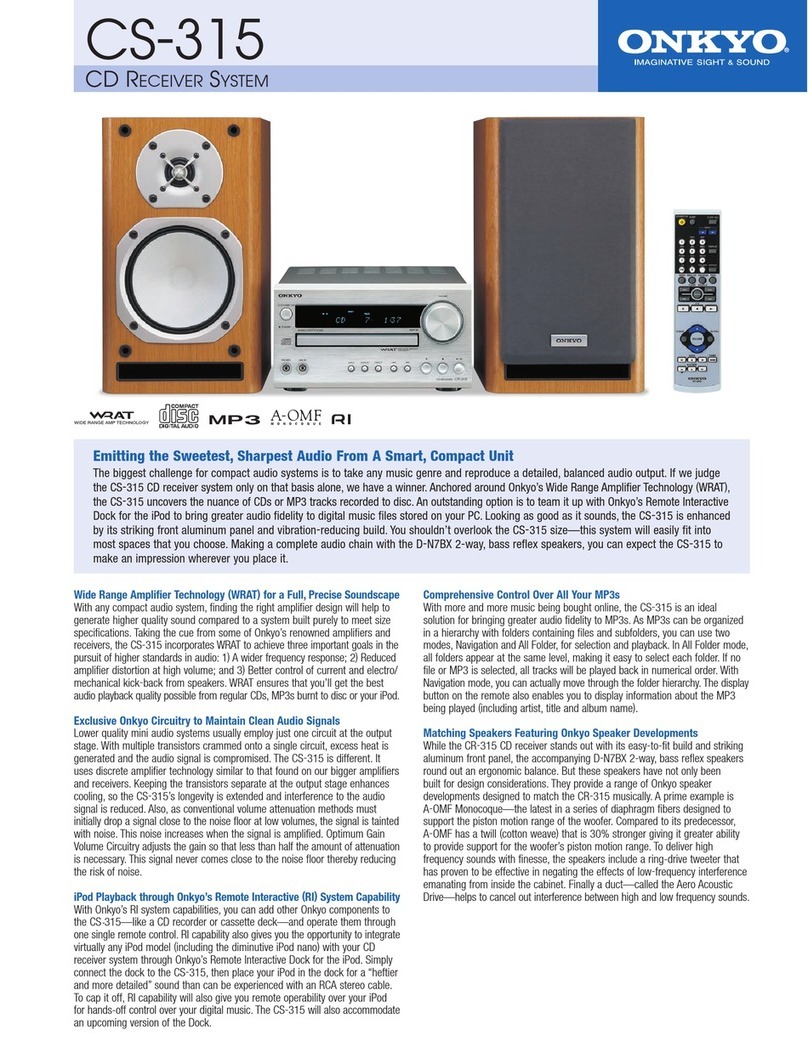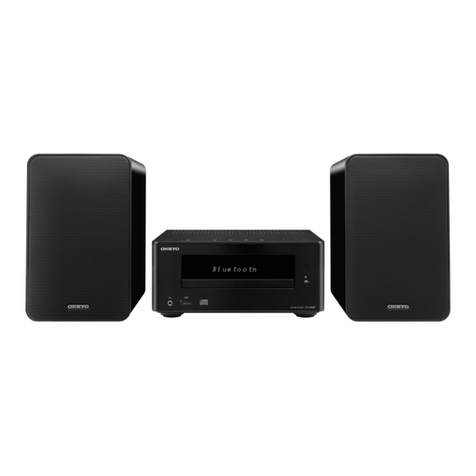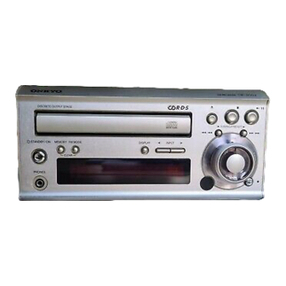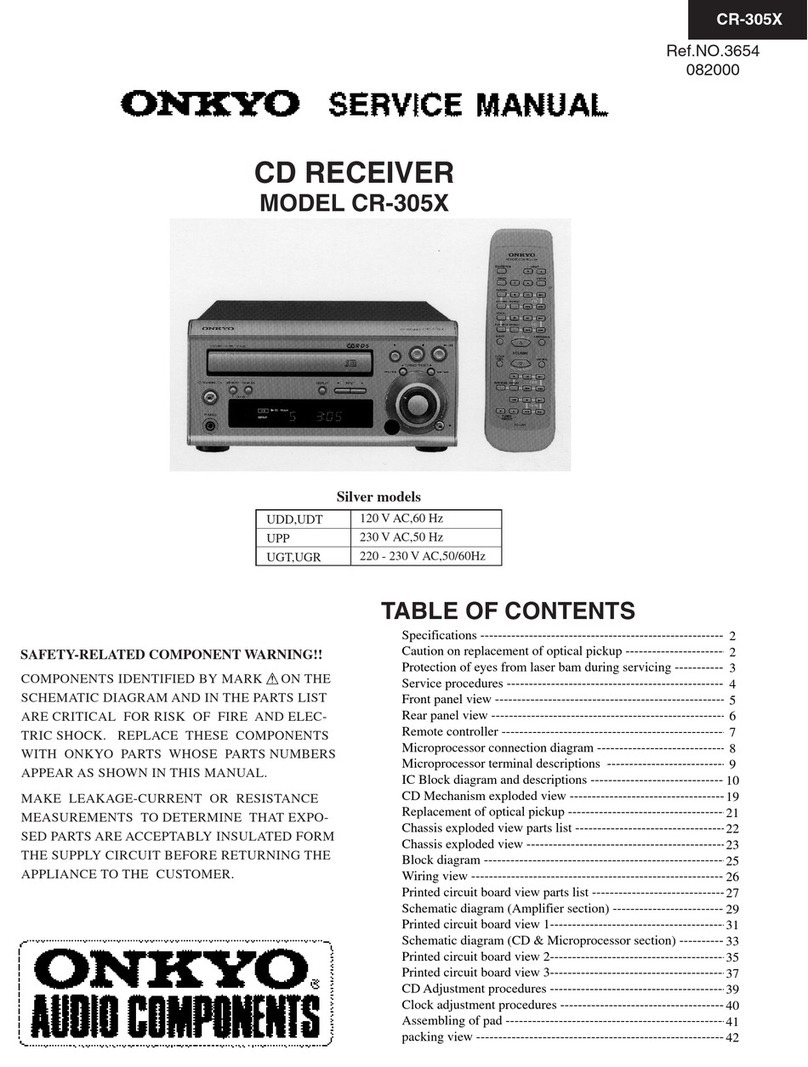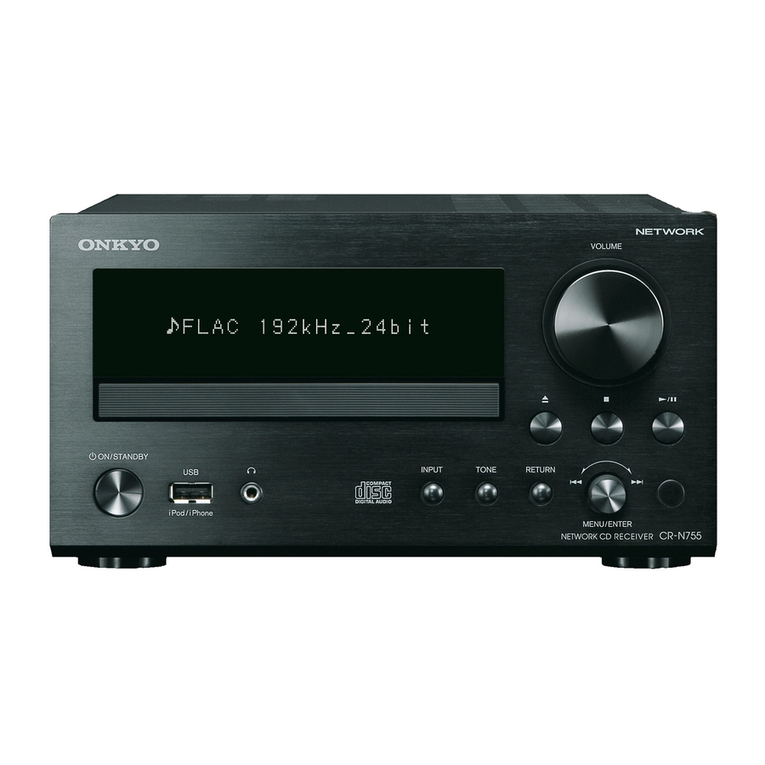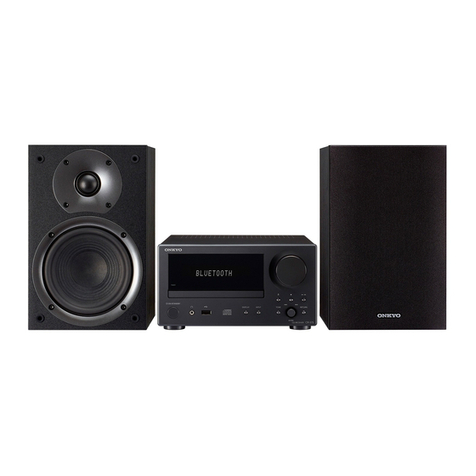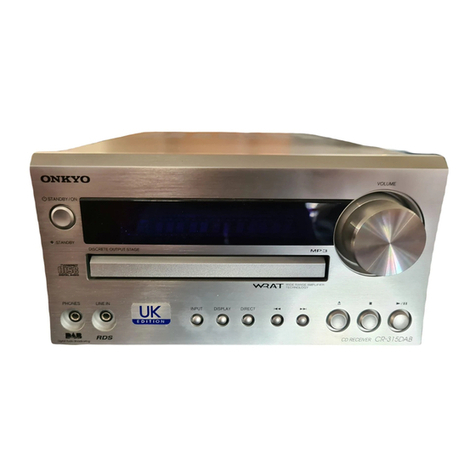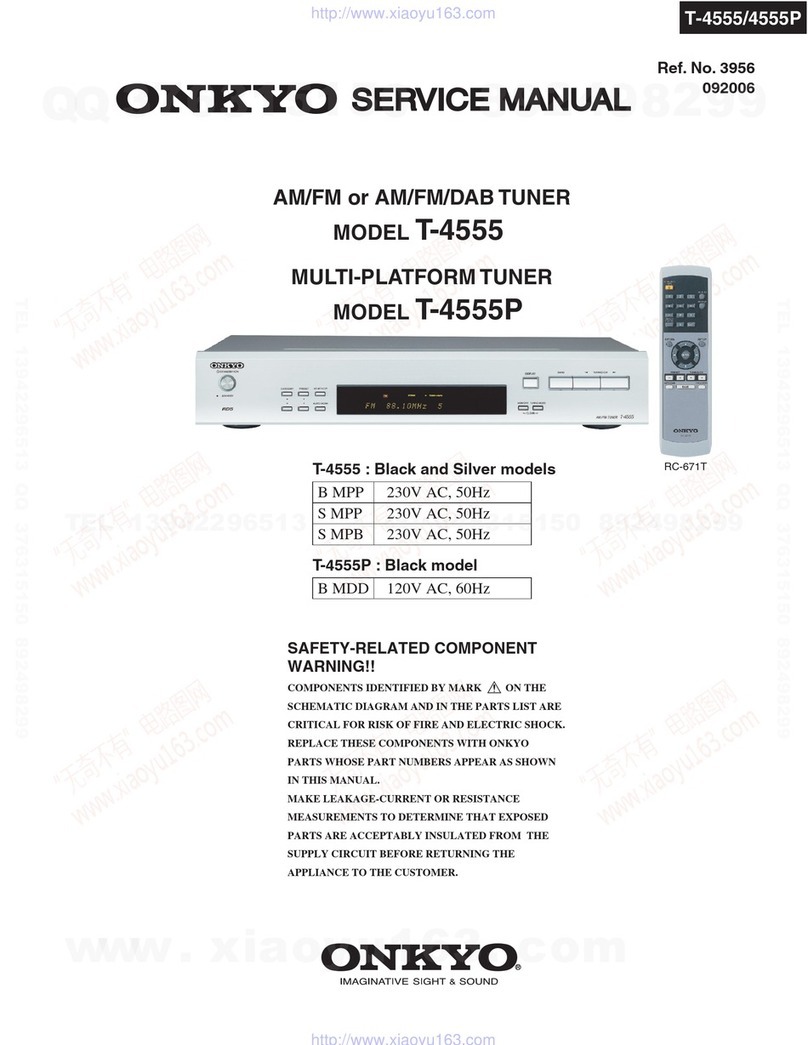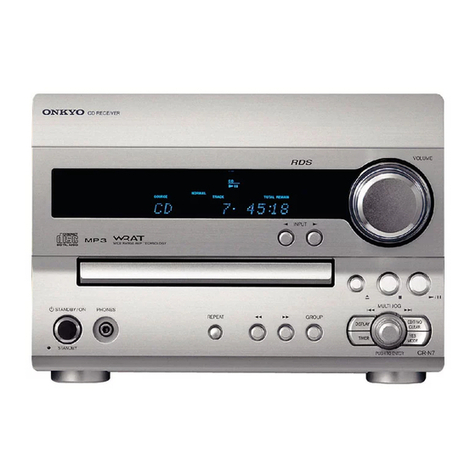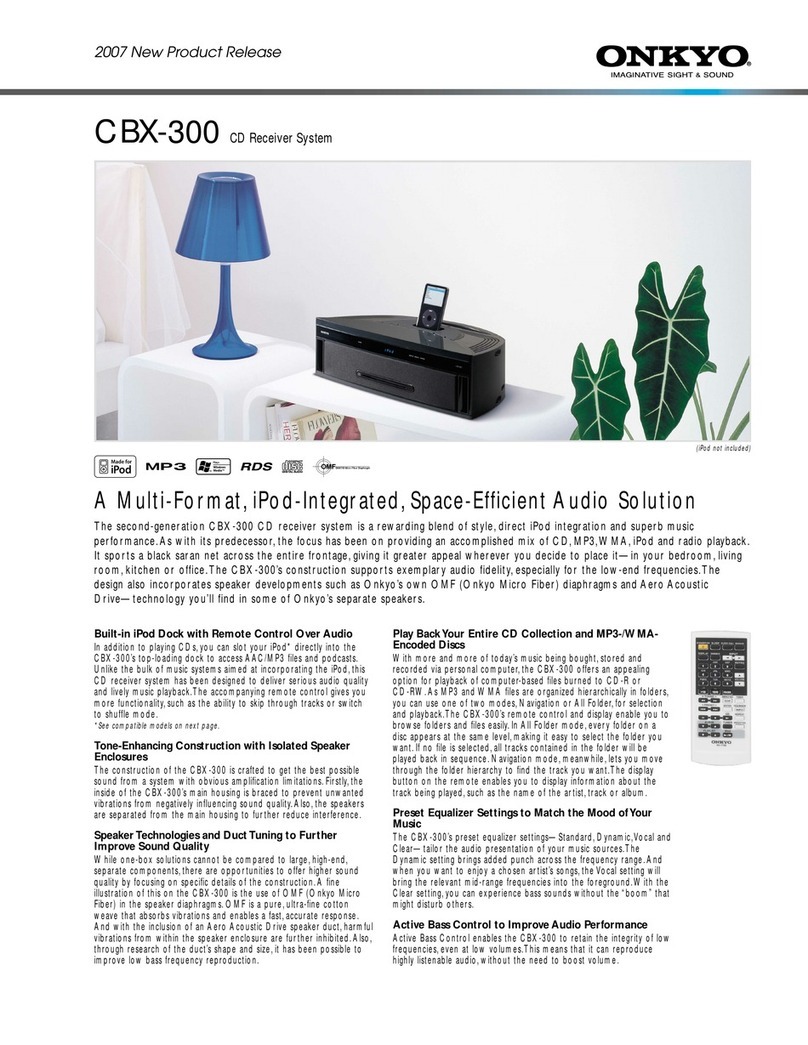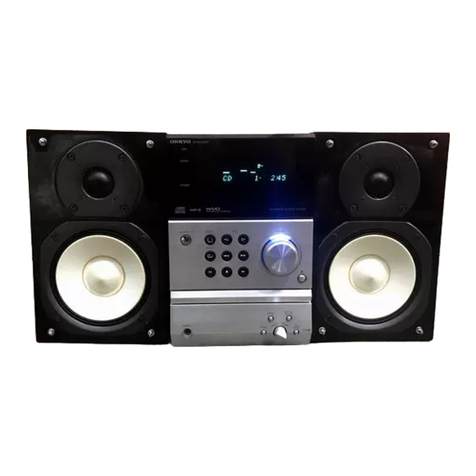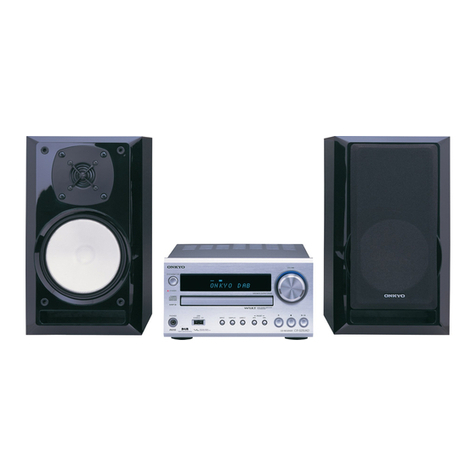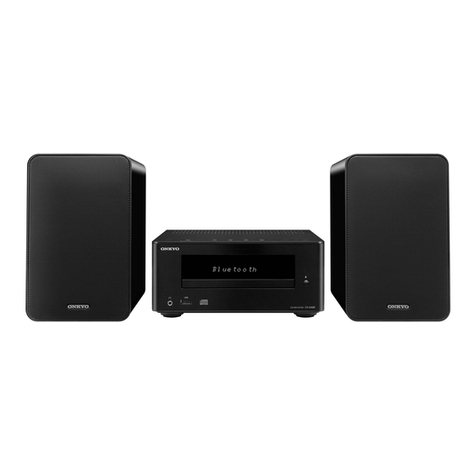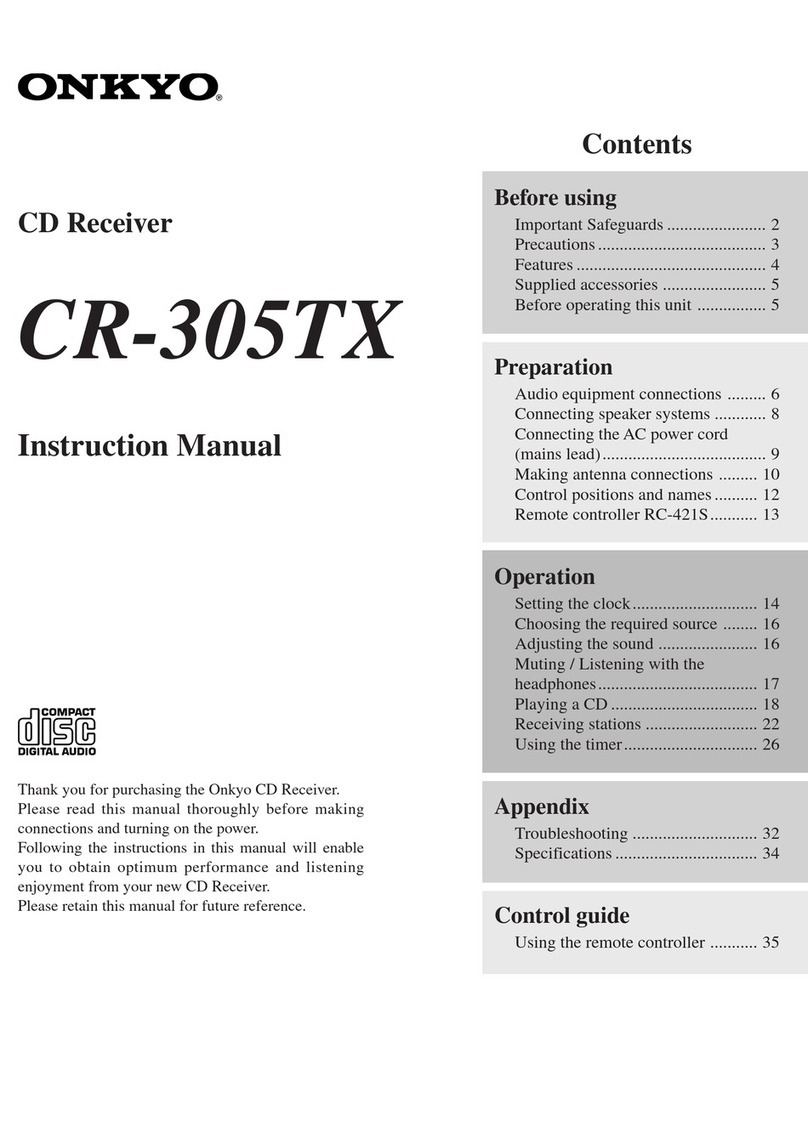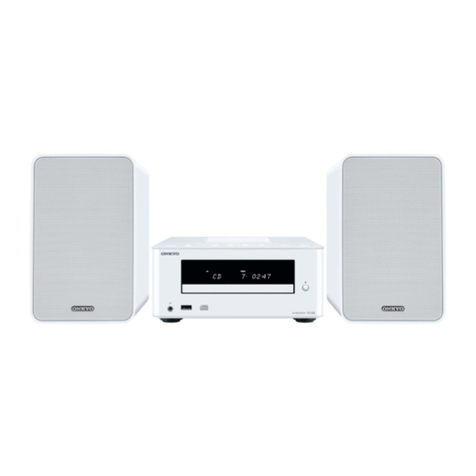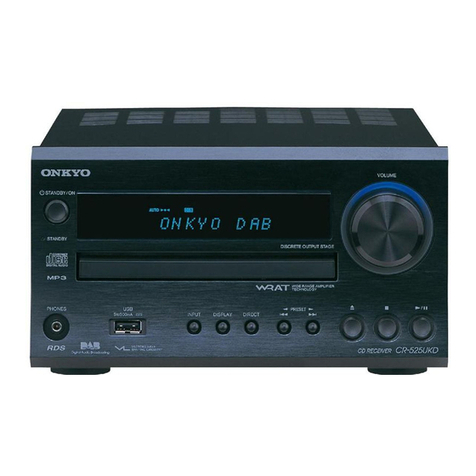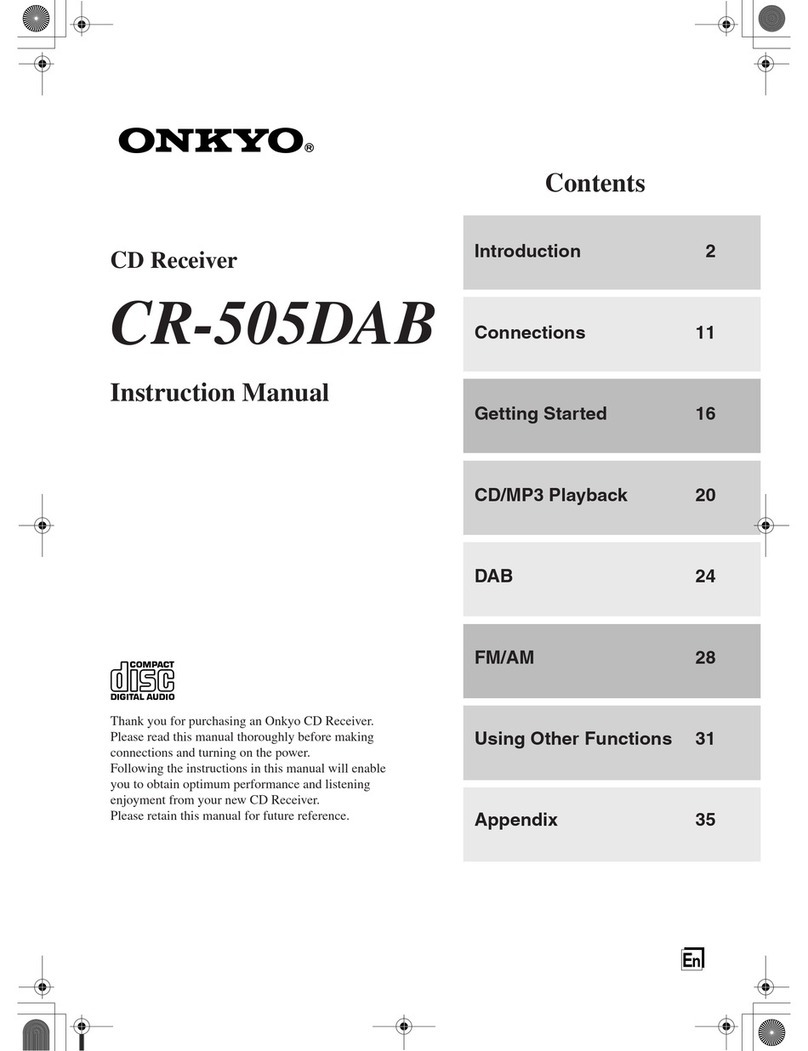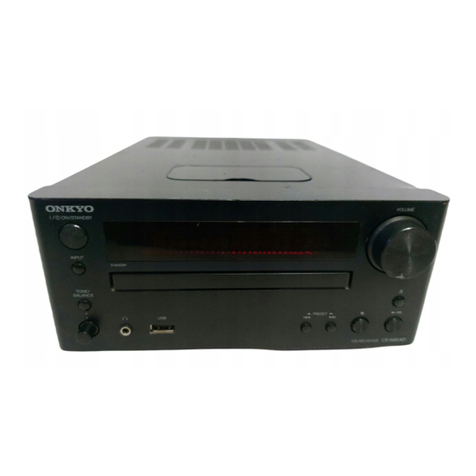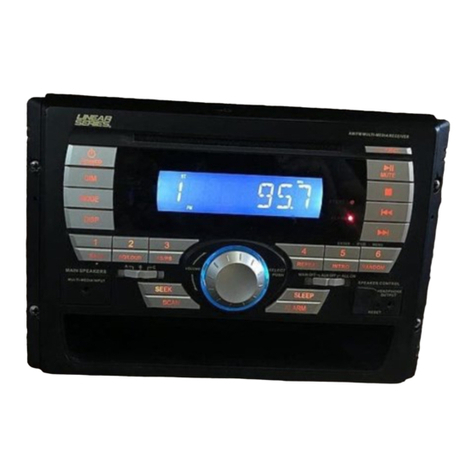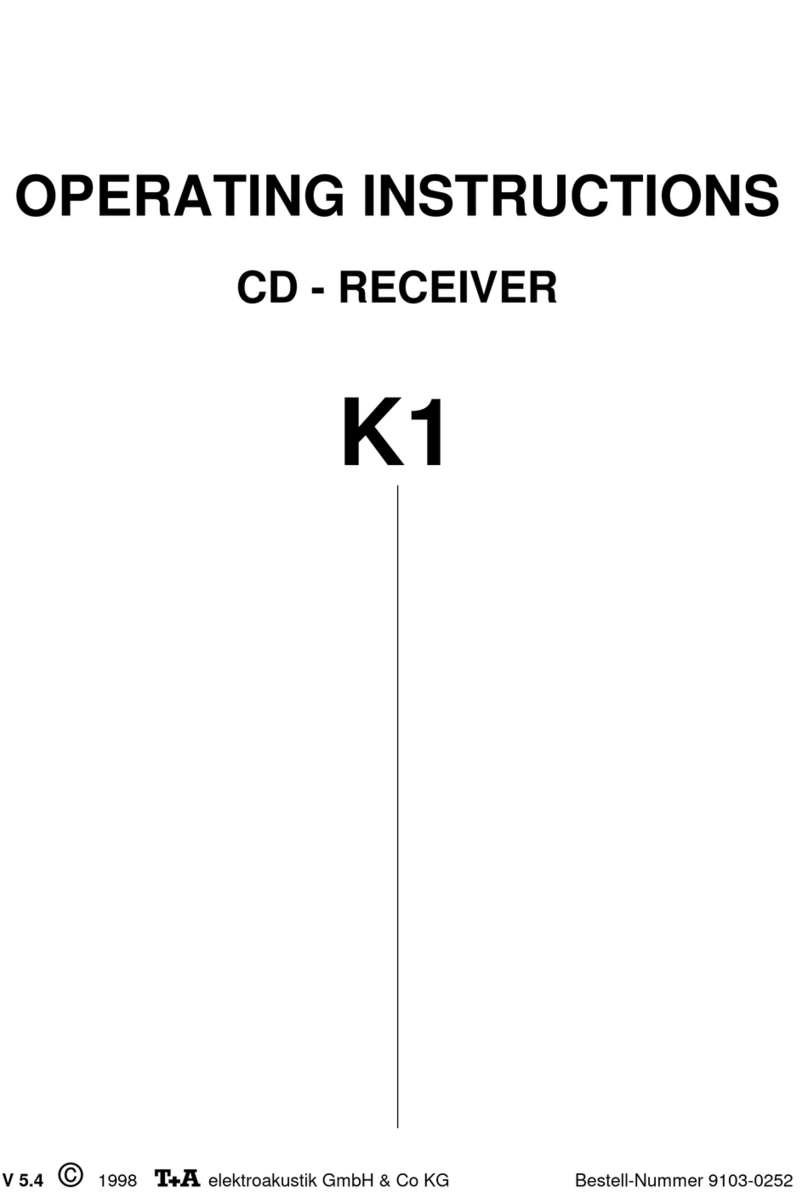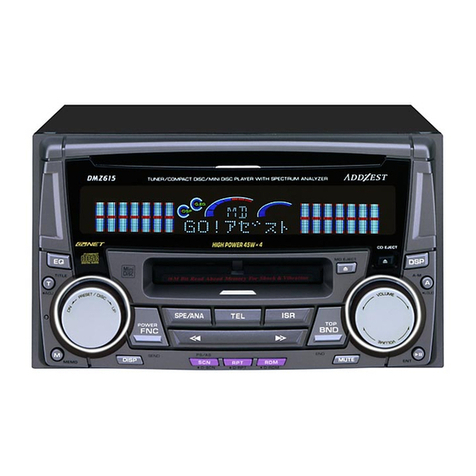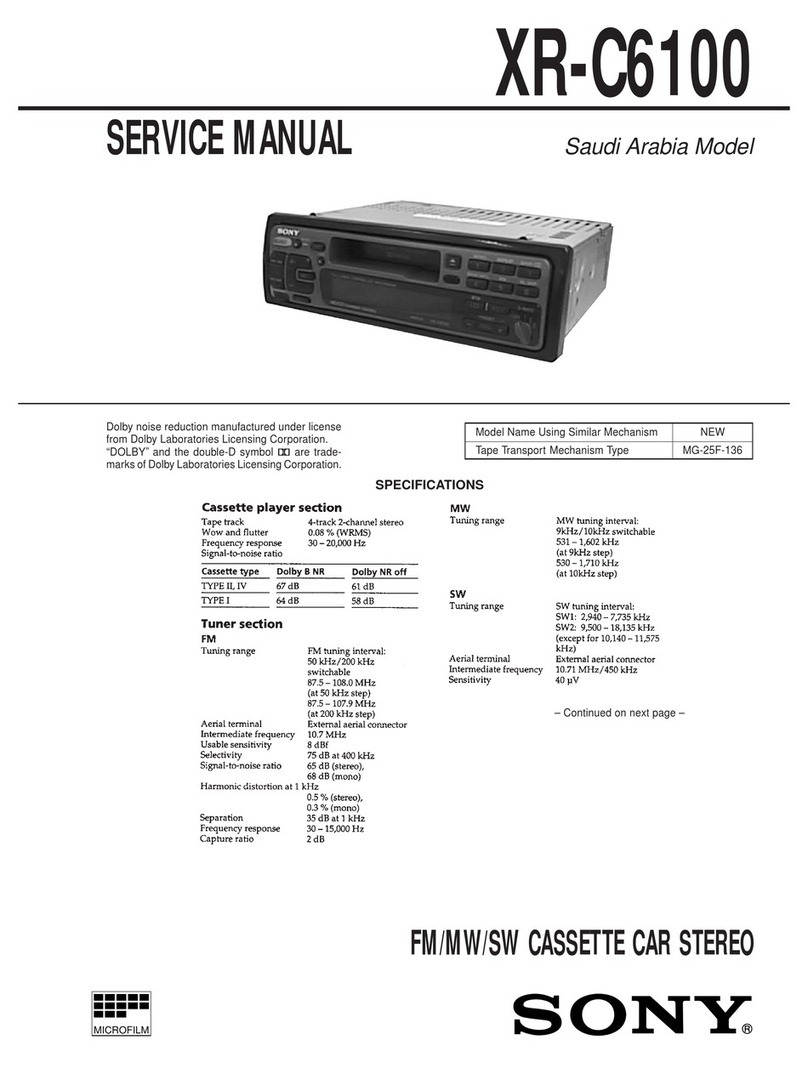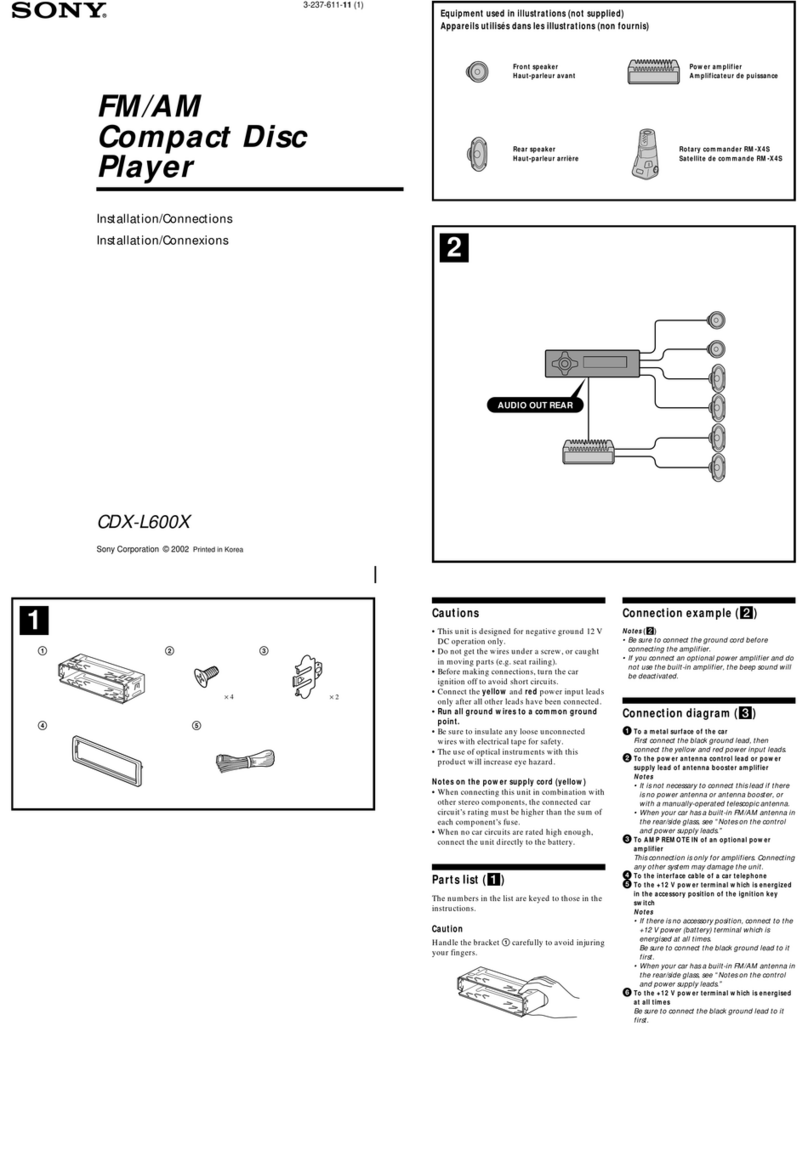2
1. ReadInstructions-Allthesafetyandoperatinginstructionsshould
be read before the appliance is operated.
2. RetainInstructions -Thesafetyandoperatinginstructionsshould
be retained for future reference.
3. Heed Warnings - All warnings on the appliance and in the
operating instructions should be adhered to.
4. Follow Instructions - All operating and use instructions should
be followed.
5. Water and Moisture - The appliance should not be used near
water-forexample,nearabathtub,washbowl,kitchensink,laundry
tub, in a wet basement, or near a swimming pool, and the like.
6. Carts and Stands - The appliance should be used only with a
cart or stand that is recommended by the
manufacturer.
6A. Anapplianceandcartcombinationshould
be moved with care. Quick stops,
excessiveforce,andunevensurfacesmay
causetheappliance and cartcombination
to overturn.
7. Wall or Ceiling Mounting -The appliance should be mounted to
a wall or ceiling only as recommended by the manufacturer.
8. Ventilation -The appliance should be situated so that its location
orpositiondoesnotinterferewithitsproperventilation.Forexample,
theappliance shouldnot besituated ona bed,sofa,rug, orsimilar
surface that may block the ventilation openings; or if placed in a
built-ininstallation,suchasabookcaseor cabinet thatmayimpede
the flow of air through the ventilation openings, there should be
free space of at least 20 cm (8 in.) and an opening behind the
appliance.
9. Heat -The appliance should be situated away from heat sources
such as radiators, heat registers, stoves, or other appliances
(including amplifiers) that produce heat.
10. Power Sources -The appliance should be connected to a power
supply only of the type described in the operating instructions or
as marked on the appliance.
11. Polarization - If the appliance is provided with a polarized plug
having one blade wider than the other, please read the following
information:
The polarization of the plug is a safety feature.The polarized plug
will only fit the outlet one way. If the plug does not fit fully into the
outlet, try reversing it.If there is still trouble, the user should seek
the services of a qualified electrician. Under no circumstances
should the user attempt to defeat the polarization of the plug.
12. Power-Cord Protection - Power-supply cords should be routed
so that they are not likely to be walked on or pinched by items
placed upon or against them, especially near plugs, convenience
receptacles, and the point where they exit from the appliance.
13. Cleaning-The appliance should be cleaned only as recommended
by the manufacturer.
14. Power Lines - An outdoor antenna should be located away from
power lines.
15. Nonuse Periods - The power cord of the appliance should be
unplugged from the outlet when left unused for a long period of
time.
16. Object and Liquid Entry - Care should be taken so that objects
do not fall and liquids are not spilled into the enclosure through
openings.
17. Damage Requiring Service - The appliance should be serviced
by qualified service personnel when:
A. The power-supply cord or the plug has been damaged;or
B. Objects have fallen, or liquid has been spilled into the
appliance; or
C. The appliance has been exposed to rain; or
D. The appliance does not appear to operate normally or
exhibits a marked change in performance; or
E. Theappliancehasbeendropped,ortheenclosuredamaged.
18. Servicing - The user should not attempt to service the appliance
beyond that described in the operating instructions. All other
servicing should be referred to qualified service personnel.
19. OutdoorAntennaGrounding-Ifanoutsideantennaisconnected
to the receiver, be sure the antenna system is grounded so as to
provide some protection against voltage surges and built up static
charges. Article 810 of the National Electrical Code, ANSI/NFPA
70, provides information with regard to proper grounding of the
mast and supporting structure, grounding of the lead-in wire to an
antenna-discharge unit, size of grounding conductors, location of
antenna-discharge unit, connection to grounding electrodes, and
requirements for the grounding electrode.See Figure 1.
Important Safeguards
S3125A
PORTABLE CART WARNING
The lightning flash with arrowhead symbol,
within an equilateral triangle, is intended to alert
the user to the presence of uninsulated
“dangerous voltage” within the product’s
enclosure that may be of sufficient magnitude to
constitute a risk of electric shock to persons.
The exclamation point within an equilateral
triangle is intended to alert the user to the
presence of important operating and
maintenance (servicing) instructions in the
literature accompanying the appliance.
WARNING:
TO REDUCE THE RISK OF FIRE OR ELECTRIC
SHOCK, DO NOT EXPOSE THIS APPLIANCE TO
RAIN OR MOISTURE.
CAUTION:
TO REDUCE THE RISK OF ELECTRIC SHOCK, DO
NOT REMOVE COVER (OR BACK). NO USER-
SERVICEABLE PARTS INSIDE. REFER SERVICING
TO QUALIFIED SERVICE PERSONNEL.
WARNING
RISK OF ELECTRIC SHOCK
DO NOT OPEN
RISQUE DE CHOC ELECTRIQUE
NE PAS OUVRIR
AVIS
